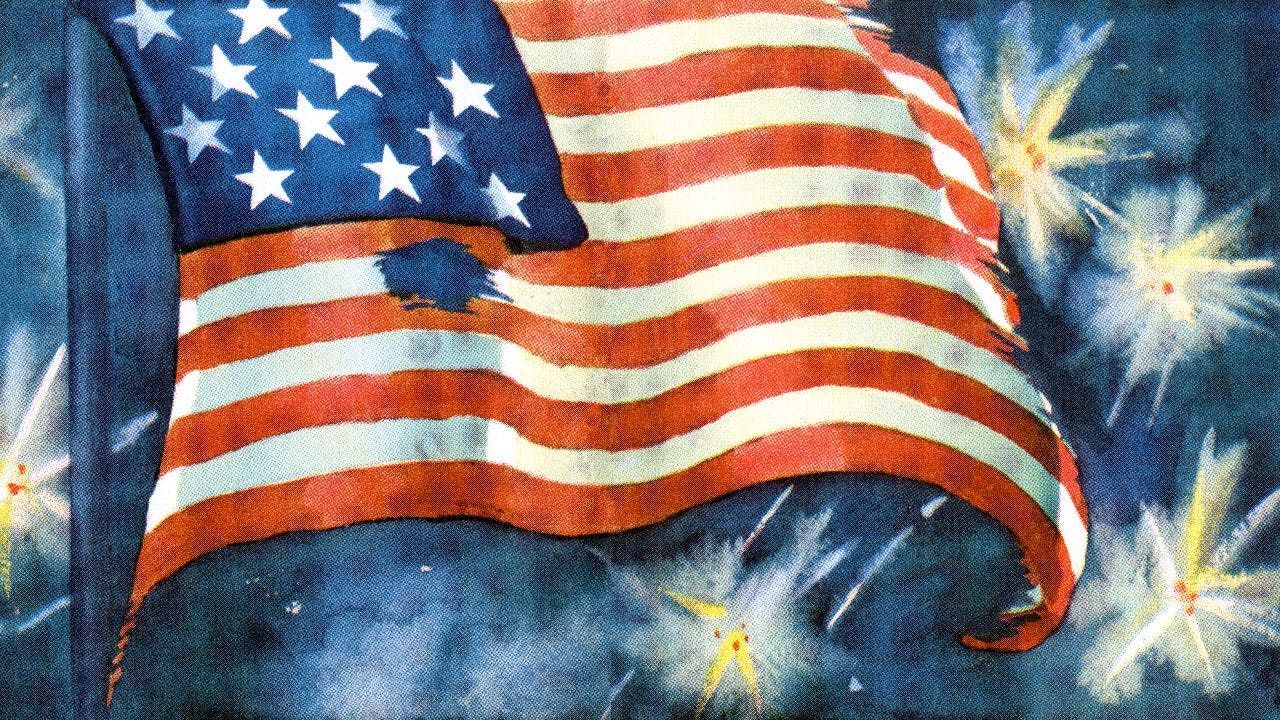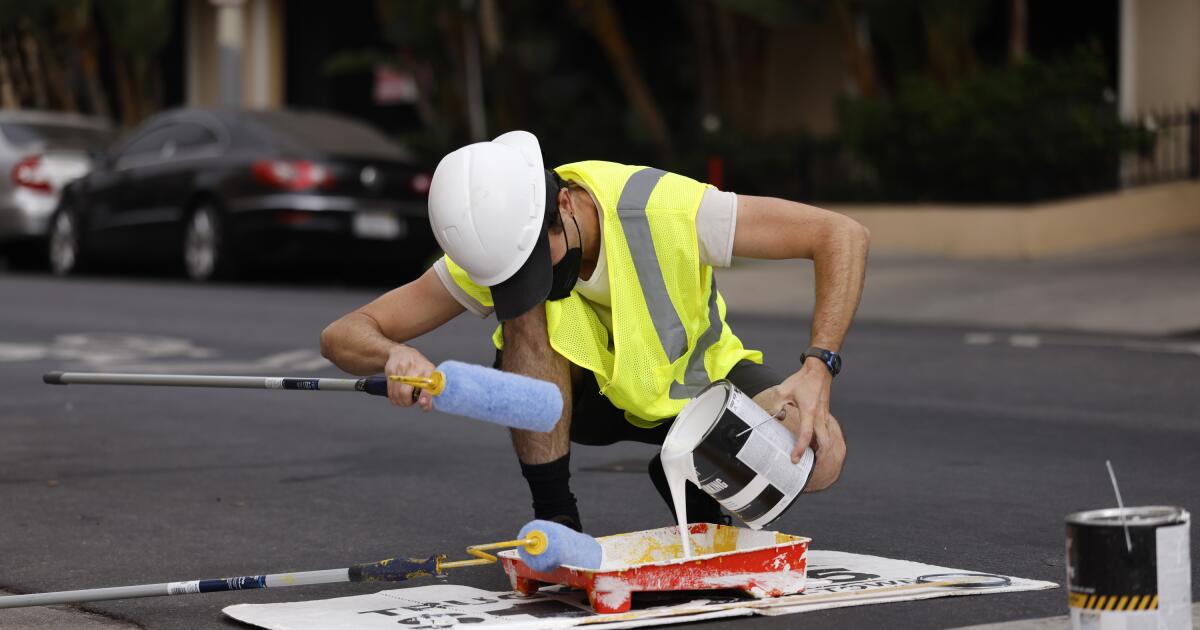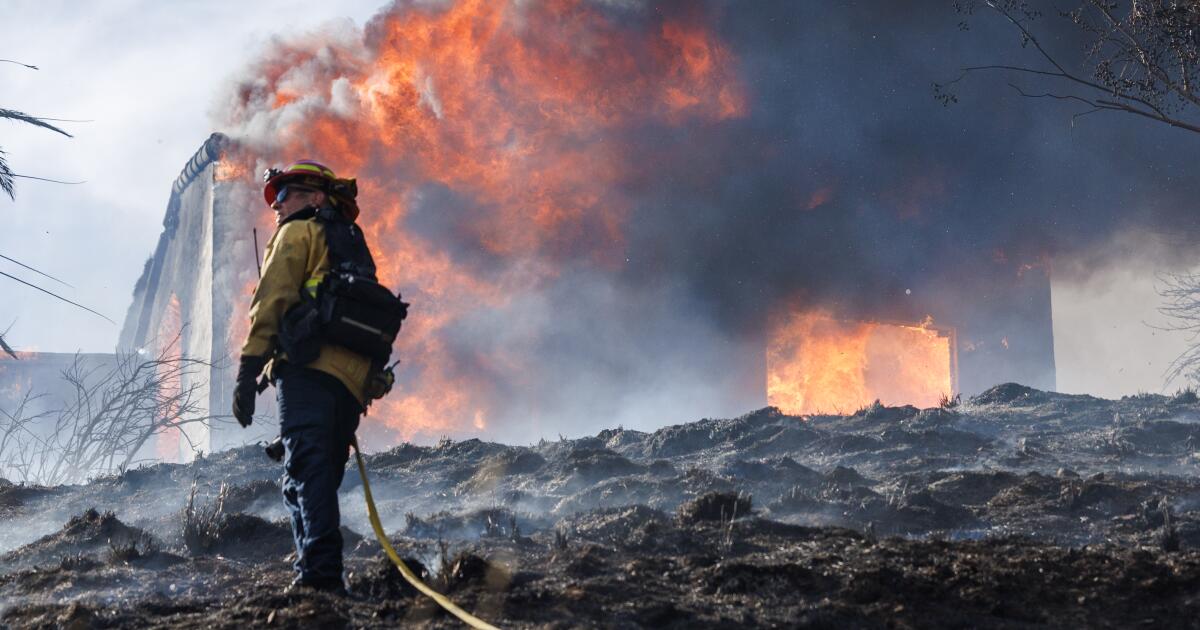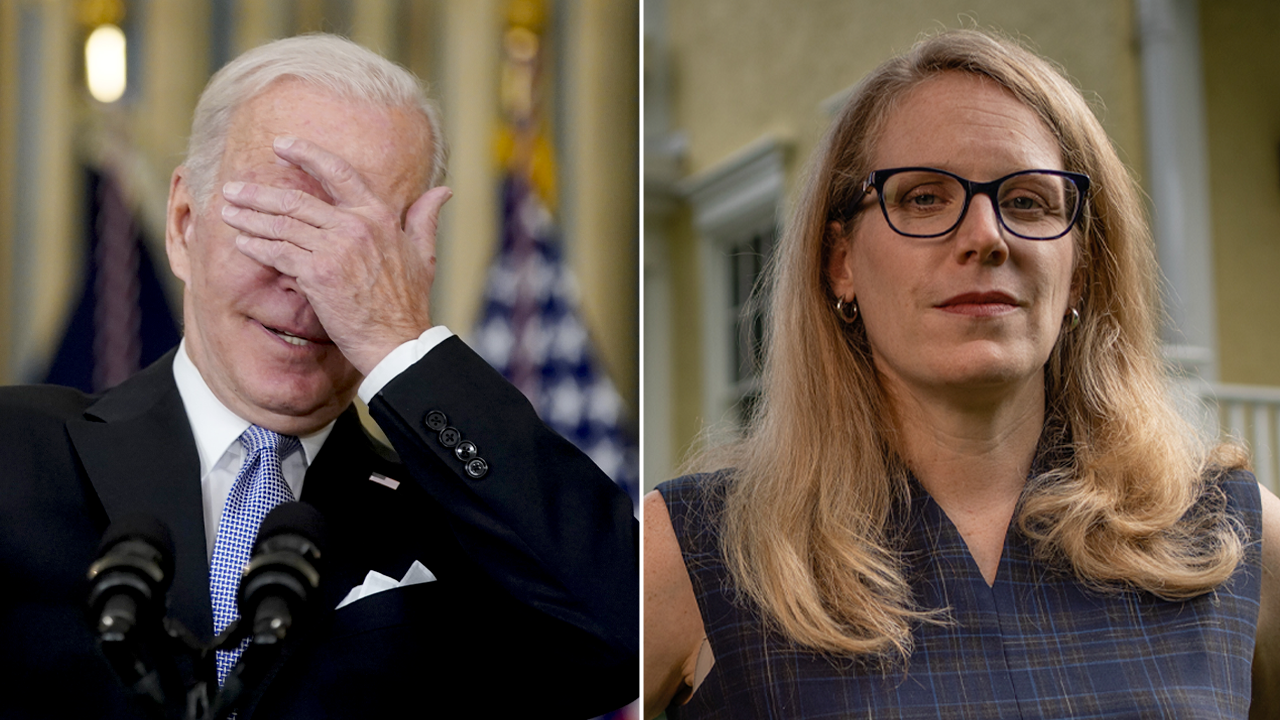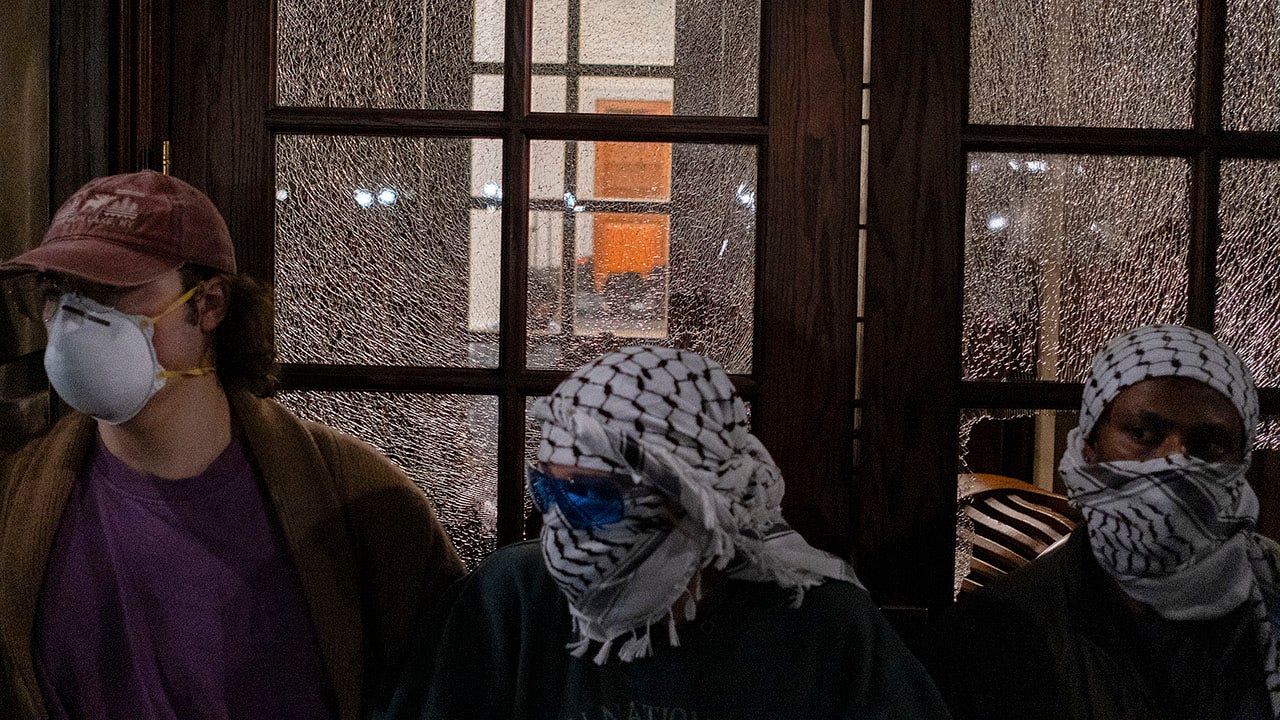Francis Scott Key woke up aboard a British warship after witnessing the terrifying 25-hour bombardment of Fort McHenry and, at dawn, was stunned to discover that our flag was still there on that day in history, September 14, 1814.
The Baltimore lawyer, in a burst of patriotic fervor after witnessing the relentless naval attack on his American homeland, soon took up pen and paper and feverishly scribbled his poetic account of the event.
We know his words today as our national anthem.
“The red glow of the rocket, the bomb bursting in the air/Gave proof through the night that our flag was still there,” Key wrote over the next two days.
“Oh, does that star-spangled banner still fly over the land of the free and the home of the brave?”
This 1941 silkscreen illustration shows an American flag flying over Fort McHenry, based on Francis Scott Key's national anthem, “The Star-Spangled Banner.” (GraphicaArtis/Getty Images)
Key was moved by the determination of his fellow Americans as the young republic faced despair in the War of 1812 and possible defeat at the hands of the British Empire.
The United States had been humiliated just three weeks earlier when British troops sacked and burned Washington DC, destroying much of the White House and Capitol Building in a blazing fire.
ON THIS DAY IN HISTORY, SEPTEMBER 13, 1857, MILK CHOCOLATE MAGNATE MILTON HERSHEY WAS BORN IN PENNSYLVANIA
Key was certain that the American defenses at Fort McHenry, just 40 miles from the nation's capital, would collapse under the intensity of the attack.
“Mother Earth… vomited out bullets and shells in a curtain of fire and brimstone.” — Francis Scott Key
“Superior British guns bombarded the fort from newly designed bombardment ships anchored safely out of range of the fort's own guns,” the National Constitution Center wrote of the empire's firepower.
ON THIS DAY IN HISTORY, AUGUST 24, 1814, BRITISH TROOPS LOOTED AND BURNED THE WHITE HOUSE AND THE CAPITOL.
“It seemed as if the mother earth had opened up and was vomiting out buckshot and shells in a blanket of fire and brimstone,” Key later wrote.
The failure of the fort to survive—and the fierce refusal of the nation, at its weakest, to bow to the British—fueled Key's deeply patriotic response.
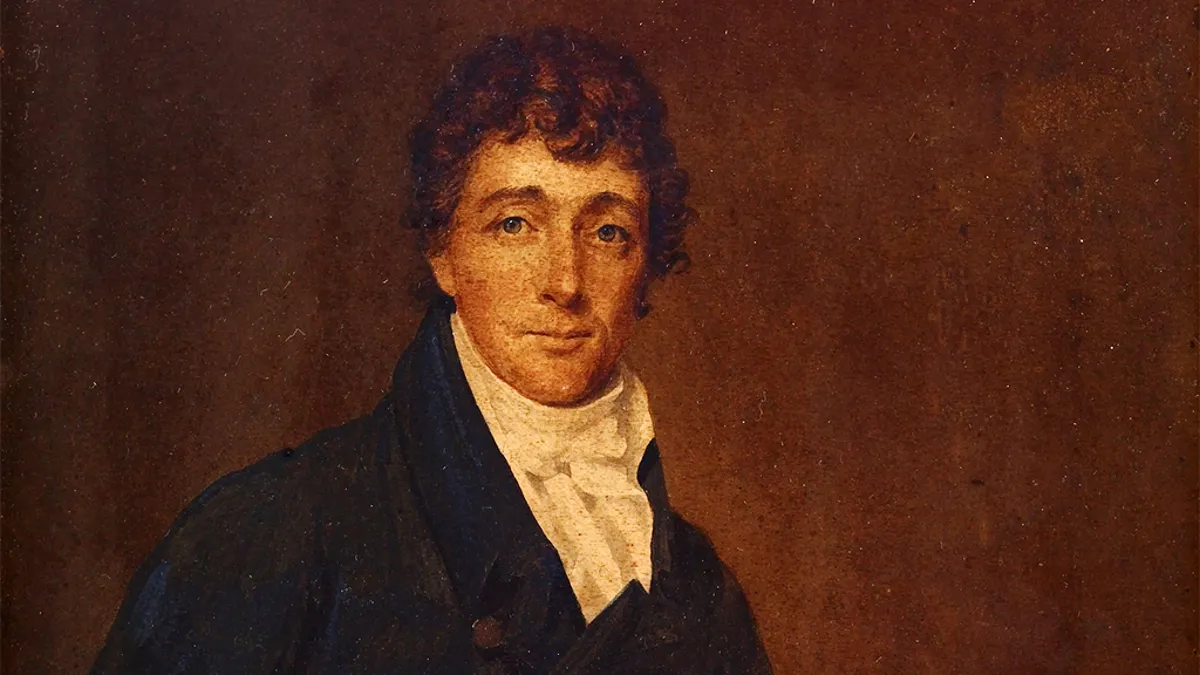
Oil on panel portrait of Francis Scott Key (fragment). Attributed to Joseph Wood (1778-1830). Collection of the Walters Art Museum. (Public domain)
“His brother-in-law, a militia commander at Fort McHenry, read Key's work and distributed it under the name 'Defense of Fort M'Henry,'” Smithsonian magazine reported in a 2007 account of the Battle of Baltimore.
“The Baltimore Patriot newspaper soon published it, and within weeks, Key's poem, now called 'The Star-Spangled Banner,' appeared in print across the country, immortalizing his words and forever naming the flag he celebrated.”
Key's poem became the national anthem thanks to an act of Congress signed by President Herbert Hoover in 1931.
“The red glow of the rocket/The bombs bursting in the air/Gave proof through the night/That our flag was still there.”
The flag raised at Fort McHenry at dawn on September 14 now enjoys a place of honor at the National Museum of American History in Washington, DC.
It is known as the Grand Garrison Flag.
ON THE ANNIVERSARY OF 9/11, HAPPY LEADERS ACROSS THE COUNTRY OFFER PRAYERS, COMFORT AND HOPE FOR OUR COUNTRY
The fort's star-spangled banner measured 42 feet by 30 feet and had 15 stars and 15 stripes.
In the early days of the nation, it was customary to add a star and stripe with the addition of each new state to the Union.

The Star-Spangled Banner or Grand Garrison Flag: the flag that flew over Fort McHenry in 1814 and inspired Francis Scott Key; silkscreen, 1926. (Photo by GraphicaArtis/Getty Images)
Major George Armistead, commander of Fort McHenry, had requested a giant flag be flown over the fort a year earlier, when the War of 1812 was in full swing and it was certain to come under attack at some point.
“The job was assigned to a 37-year-old widow, Mary Pickersgill, a flag and signal maker for ships,” the National Park Service said of the history of the Grand Garrison Flag.
CLICK HERE TO SUBSCRIBE TO OUR LIFESTYLE NEWSLETTER
“She worked for seven weeks with her 13-year-old daughter, Caroline, two nieces, Eliza Young, 13, and Margaret Young, 15, a 13-year-old African-American servant, Grace Wisher, and possibly her mother, Rebecca Young, who had taught her the trade.”
The state of Maryland honors the defense of Fort McHenry with Defenders Day every September 12.
The NPS continued: “They gathered together strips of loosely woven English wool bunting and then laid out the entire flag on the spacious floor of a brewery near Mrs. Pickersgill's home on Pratt Street, now the Star-Spangled Banner Flag House Museum.”
A smaller flag that flew over the fort during the bombardment has been lost to history, according to the NPS.
For more lifestyle articles, visit www.foxnews.com/lifestyle
Fort McHenry today enjoys special status not only as a national monument but as an American historic sanctuary.
CLICK HERE TO GET THE FOX NEWS APP
The state of Maryland honors the defense of Fort McHenry with Defenders Day every September 12.

